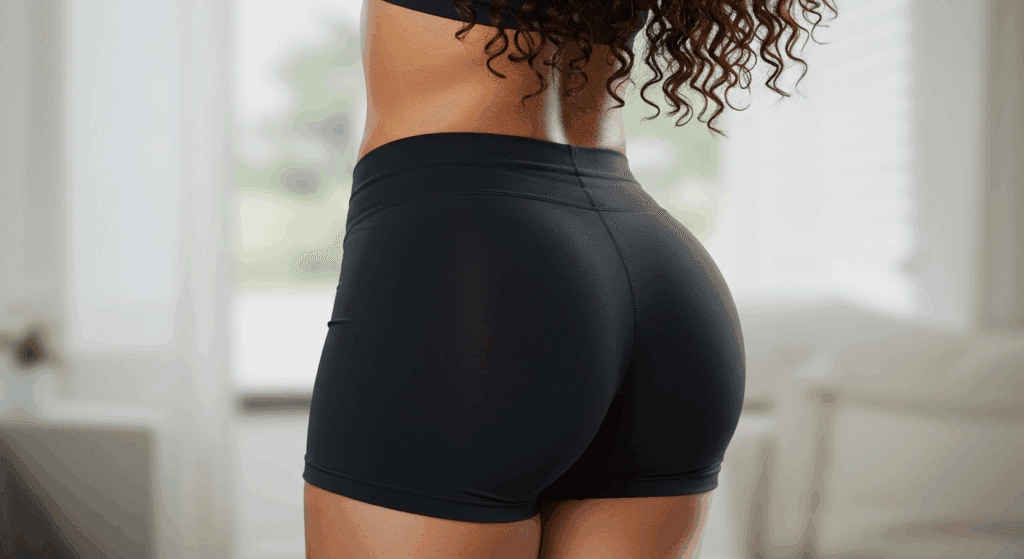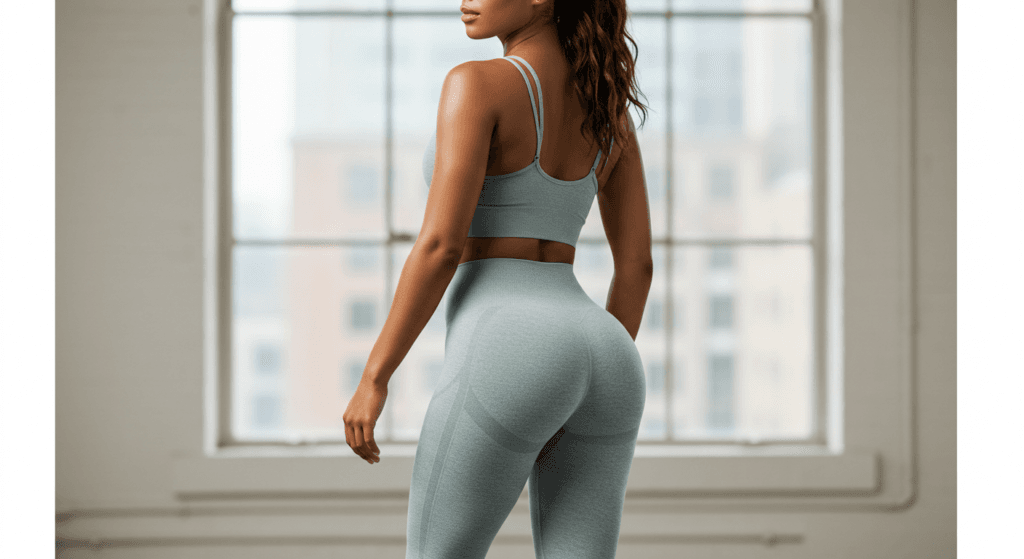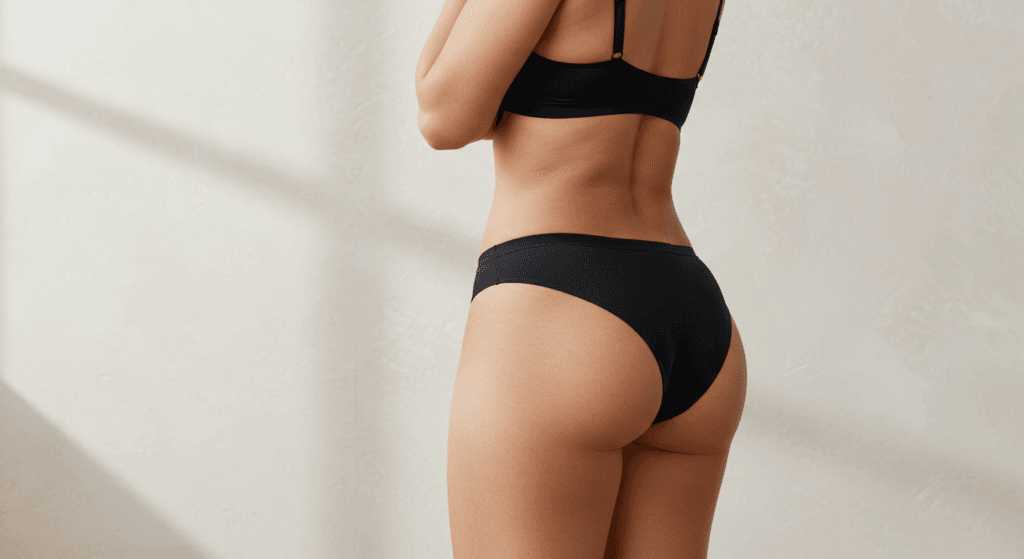If you’re considering gluteal augmentation surgery, one of the first questions on your mind is likely: “How much does it cost, and what influences the price?” You’re not alone. This procedure, which includes options like the Brazilian Butt Lift (BBL) and buttock implants, has surged in popularity, with over 50,000 procedures performed annually in the U.S. alone. However, the cost can vary dramatically—from $4,000 to $20,000 or more—depending on multiple factors.
In this comprehensive guide, we’ll break down:
- Der Durchschnittskosten of gluteal augmentation procedures in 2024,
- Der key factors that influence pricing,
- How to budget effectively for your surgery,
- And what hidden costs to watch out for.
By the end, you’ll have a clear understanding of what to expect financially and how to make an informed decision. Let’s dive in.

Inhaltsverzeichnis
The Cost of Gluteal Augmentation Surgery: A Detailed Breakdown
1. Average Cost by Procedure Type
The cost of gluteal augmentation varies significantly based on the type of procedure you choose. Below is a detailed breakdown of the average costs for the most common types:
| Prozedurtyp | Durchschnittliche Kosten (USD) | Key Features |
|---|---|---|
| Brazilian Butt Lift (BBL) | $6,000 – $15,000 | Uses fat transfer from other body areas (e.g., abdomen, thighs) to enhance buttock size and shape. Includes liposuction costs. |
| Buttock Implants | $8,000 – $20,000 | Involves silicone implants to increase buttock volume and projection. Requires a longer recovery period. |
| Hybrid Augmentation (Fat Transfer + Implants) | $12,000 – $25,000 | Combines fat transfer and implants for maximum enhancement. Ideal for patients seeking dramatic results. |
Note: Prices are approximate and can vary based on geographic location, surgeon expertise, and facility fees.
2. Geographic Location and Cost Variations
The cost of gluteal augmentation can also vary significantly depending on where you have the procedure performed. For example:
- United States: $6,000 – $20,000 (higher in major cities like Los Angeles or Miami).
- Mexico: $4,000 – $10,000 (popular for medical tourism).
- Turkey: $3,500 – $8,000 (known for high-quality, affordable options).
- Brazil: $5,000 – $12,000 (home of the BBL, with experienced surgeons).
Traveling abroad for surgery can reduce costs, but it’s essential to consider additional expenses like travel, accommodation, and potential follow-up care.
3. Surgeon’s Experience and Facility Fees
The expertise of your surgeon and the quality of the facility play a significant role in pricing:
- Board-Certified Surgeons: Typically charge more due to their training, experience, and reputation. Expect to pay 20-30% more for a top-tier surgeon.
- Accredited Facilities: Hospitals or surgical centers with state-of-the-art equipment may add $1,000 – $3,000 to the total cost.
- Anästhesiekosten: Can range from $500 – $2,000, depending on the complexity of the procedure.
Key Factors That Influence the Cost of Gluteal Augmentation
1. Procedure Complexity and Customization
The more customized and complex your procedure, the higher the cost. Factors include:
- Amount of Fat Transfer: For BBLs, the more areas you target for liposuction, the higher the cost. For example, liposuction on the abdomen, thighs, and back will increase the price compared to a single area.
- Implant Size and Type: Larger or specialty implants (e.g., high-projection) can add $1,000 – $3,000 to the total cost.
- Combined Procedures: Many patients opt for additional procedures like Fettabsaugung or a Bauchstraffung, which can increase costs by $3,000 – $8,000.
2. Pre- and Post-Operative Care
Pre- and post-operative care are critical for a successful outcome but can add to the overall cost:
- Pre-Operative Tests: Blood work, EKG, and other tests can cost $200 – $500.
- Post-Operative Garments: Compression garments and specialized clothing may add $100 – $300.
- Follow-Up Visits: Some surgeons include follow-up visits in the total cost, while others charge $100 – $300 per visit.
- Medikamente: Painkillers, antibiotics, and other prescriptions can cost $50 – $200.
3. Recovery and Downtime
Recovery is a crucial phase that can indirectly affect your budget. Consider the following:
- Time Off Work: Most patients need 2-4 Wochen off work, depending on the procedure. If you don’t have paid leave, this can impact your finances.
- Assistance at Home: Hiring a caregiver or nurse for the first few days post-surgery can cost $20 – $50 per hour.
- Physical Therapy: Some patients opt for lymphatic massages or physical therapy to aid recovery, adding $100 – $300 per session.
For a detailed guide on recovery, check out our Brazilian Butt Lift Recovery article.

How to Budget for Gluteal Augmentation Surgery
1. Hidden Costs to Watch Out For
When budgeting for gluteal augmentation, it’s essential to account for hidden costs that may not be included in the initial quote:
- Revision Surgery: If complications arise or you’re unsatisfied with the results, revision surgery can cost 50-100% of the original procedure.
- Travel Expenses: If you’re traveling for surgery, factor in flights, hotels, and local transportation.
- Emergency Care: Complications may require additional medical attention, which can add unexpected costs.
- Insurance: Most insurance plans do not cover cosmetic procedures, but some may cover complications or related medical issues.
2. Financing Options
Many patients use financing options to manage the cost of gluteal augmentation. Here are some common choices:
- Medical Loans: Companies like CareCredit or Alphaeon offer loans specifically for cosmetic procedures, with interest rates ranging from 0% to 25%.
- Payment Plans: Some surgeons offer in-house payment plans, allowing you to pay in installments over 6-24 months.
- Credit Cards: Using a credit card with a low-interest rate or promotional period can help spread out costs.
- Savings: Saving up for the procedure is the most cost-effective option, as it avoids interest fees.
3. Choosing the Right Surgeon
While cost is a significant factor, it’s crucial not to compromise on the quality of your surgeon. Here’s how to find the right balance:
- Research: Look for board-certified surgeons with extensive experience in gluteal augmentation. Websites like the American Society of Plastic Surgeons can help you find qualified professionals.
- Konsultationen: Schedule consultations with multiple surgeons to compare pricing, techniques, and bedside manner.
- Vorher-Nachher-Fotos: Review the surgeon’s portfolio to ensure their aesthetic aligns with your goals.
- Patient Reviews: Read reviews on platforms like RealSelf or Google to gauge patient satisfaction.
Risks, Benefits, and Who Is an Ideal Candidate?
1. Benefits of Gluteal Augmentation
Gluteal augmentation offers numerous benefits beyond aesthetic enhancement:
- Improved Body Proportions: Enhances the balance between your hips, waist, and buttocks for a more hourglass figure.
- Mehr Selbstvertrauen: Many patients report increased self-esteem and body confidence post-surgery.
- Long-Lasting Results: With proper care, results can last 10+ Jahre for implants and permanently for fat transfers (if weight is maintained).
- Customizable: Procedures can be tailored to achieve your desired shape, size, and projection.
2. Risks and Complications
As with any surgery, gluteal augmentation carries risks. It’s essential to be aware of these before proceeding:
- Infektion: Can occur at the incision sites or within the implants. Proper post-operative care minimizes this risk.
- Fat Embolism: A rare but serious complication where fat enters the bloodstream. Choosing an experienced surgeon reduces this risk.
- Implant Displacement: Implants may shift over time, requiring revision surgery.
- Narbenbildung: While scars are inevitable, they typically fade over time and can be minimized with proper care.
- Asymmetrie: Uneven results may occur, requiring additional procedures to correct.
For a deeper dive into risks, visit our article on Risks of Body Contouring.
3. Who Is an Ideal Candidate?
Not everyone is a suitable candidate for gluteal augmentation. Ideal candidates typically meet the following criteria:
- Good Health: Candidates should be in good overall health, with no chronic conditions that could impair healing.
- Stable Weight: For fat transfer procedures, candidates should have enough fat deposits for harvesting and maintain a stable weight.
- Realistische Erwartungen: Understanding the limitations and potential outcomes of the procedure is crucial.
- Non-Smokers: Smoking can impede healing and increase the risk of complications.
If you’re unsure whether you’re a good candidate, consult with a qualified surgeon. For more information, check out our guide on Who Should Not Get Liposuction.
Conclusion: Making an Informed Decision
Key Takeaways
- Cost Range: Gluteal augmentation typically costs between $4,000 and $20,000, depending on the procedure type, location, and surgeon’s expertise.
- Budgeting: Account for hidden costs like travel, post-operative care, and potential revision surgeries.
- Financing: Explore options like medical loans, payment plans, or savings to manage costs effectively.
- Choosing a Surgeon: Prioritize experience, certifications, and patient reviews over cost alone.
- Risks and Benefits: Weigh the aesthetic and confidence-boosting benefits against potential risks like infection or asymmetry.
Next Steps
If you’re ready to take the next step, here’s what to do:
- Research Surgeons: Start by identifying board-certified surgeons in your area or preferred destination.
- Schedule Consultations: Meet with at least 2-3 surgeons to discuss your goals, budget, and expectations.
- Review Financing Options: Determine the best way to finance your procedure, whether through savings, loans, or payment plans.
- Prepare for Recovery: Plan for time off work and arrange for post-operative care and assistance.
- Ask Questions: Don’t hesitate to ask your surgeon about their experience, success rates, and any concerns you may have.
For further reading, explore our related articles:
- Kosten für Brazilian Butt Lift: Budgetierungsleitfaden
- Buttock Augmentation with Implants
- Brazilian Butt Lift Recovery Tips
Häufig gestellte Fragen (FAQs)
1. How long do the results of gluteal augmentation last?
The longevity of results depends on the procedure type:
- Fat Transfer (BBL): Results can last permanently if you maintain a stable weight. However, some fat may be reabsorbed in the first few months.
- Implantate: Typically last 10-15 years before they may need replacement due to wear or shifting.
2. Is gluteal augmentation painful?
Pain levels vary by individual and procedure type. Most patients report moderate discomfort for the first 3-7 days, which can be managed with prescribed pain medication. Full recovery may take 4-6 weeks.
3. Can I finance my gluteal augmentation surgery?
Yes! Many surgeons offer financing options through third-party companies like CareCredit or Alphaeon. Additionally, some clinics provide in-house payment plans. Be sure to discuss financing during your consultation.
4. What is the difference between a BBL and buttock implants?
A Brazilian Butt Lift (BBL) uses your body’s fat to enhance the buttocks, while buttock implants involve inserting silicone implants. BBLs offer a more natural look and feel, while implants provide more dramatic projection.
5. Are there non-surgical alternatives to gluteal augmentation?
Yes, non-surgical options like SculpSure, CoolSculpting, or injectable fillers can provide temporary enhancement. However, these methods typically offer less dramatic results compared to surgery.
6. How do I choose between a BBL and implants?
The choice depends on your goals and body type:
- BBL: Ideal if you have excess fat in other areas and want a natural enhancement.
- Implantate: Better for those with limited fat deposits or seeking significant projection.
7. What should I avoid after gluteal augmentation?
Post-surgery, avoid:
- Sitting directly on your buttocks for 2-3 Wochen (use a BBL pillow).
- Strenuous activities or heavy lifting for 4-6 weeks.
- Smoking or alcohol, as they can impede healing.
8. Can I combine gluteal augmentation with other procedures?
Yes! Many patients combine gluteal augmentation with procedures like Fettabsaugung or a Bauchstraffung for a more comprehensive body transformation.
Our Surgeons and Affiliated Professionals
At Surgyteam, we are proud to collaborate with a distinguished team of medical professionals, each bringing a wealth of expertise and a commitment to patient-centered care.
- Dr. Mehmet Fatih Okyay (Dr. MFO): Plastic, Reconstructive and Aesthetic Surgery Specialist. Co-founder of Surgyteam. FEBOPRAS certified. (https://www.dr-mfo.com/)
- Dr. Selçuk Yılmaz: Plastic, Reconstructive and Aesthetic Surgery Specialist. (https://drselcukyilmaz.com)
- Dr. Ebru Okyay: Dermatology Specialist. (https://drebruokyay.com/)
- Dr. Mustafa Keleş: Aesthetic, Plastic and Reconstructive Surgery Specialist. (https://www.medstar.com.tr/doktorlar/mustafa-keles/)
- Dr. Boray Yücel: Plastic, Reconstructive and Aesthetic Surgery Specialist. (https://borayucel.com/)
- Dr. Sibel Atalay: Plastic, Reconstructive and Aesthetic Surgery Specialist. Clinic with International Health Tourism Authorization Certificate. (https://www.sibelatalay.com.tr/)
- Dr. Mert Meral: Plastic, Reconstructive and Aesthetic Surgery Specialist. EBOPRAS certified. (https://mertmeral.com/)
To learn more about Surgyteam and how we can assist you, please visit our website:
https://surgyteam.com/
Disclaimer: This blog post is intended for informational purposes only and does not constitute medical advice. Costs are estimates and can vary. Always consult with a qualified medical professional for personalized advice and treatment.



